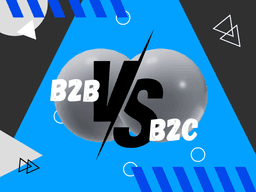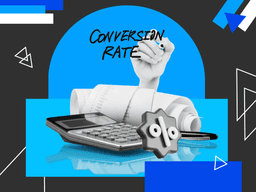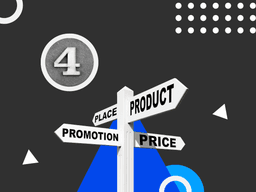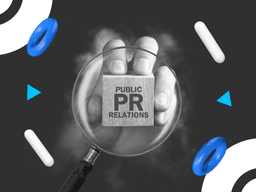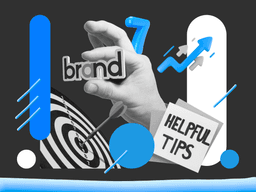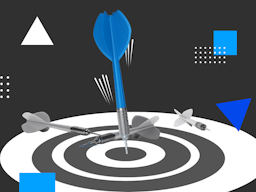/ The Marketing Mix Evolution from 4Ps to 7Ps Element
The Marketing Mix Evolution from 4Ps to 7Ps Element

As time goes by, the marketing mix has evolved to fulfill the needs of all types of businesses. It was originally 4Ps and has been extended into 7Ps elements.
Businesses nowadays use the 7Ps to define their marketing strategy as they need additional layers of depth. This is closely related to the fact that many businesses are now emerging that sell services, not just products.
The 4Ps Marketing Mix
E. Jerome McCarthy is the one who invented the 4Ps marketing mix in 1960. It aims to determine a product offering and marketing strategy.
1. Product
The first element, product refers to what the company produces, whether they are goods, services, or a combination of both. The product must be developed properly to meet the customers’ needs and expectations. E.g.: The need for a home cleaning tool is met with a vacuum cleaner.
After creating a product, the marketing team must brainstorm with the product development team to improve the offering. This can be done by creating the right bundle of benefits and creating new versions of existing products.
During the brainstorming session, think beyond the actual product itself to find what value can be added that will satisfy the customers. Whether it is guarantees, after-sales support, 24/7 support, digital tutorials, or a user-friendly application that supports the product.
2. Price
Next, it is crucial to set the right price for each product. It is not only to cover the costs, but also generate profit. To set the right price, calculate every cost to make a product and add the wanted profit margin. Then do deep research to find the demand for that product in the market and what customers are willing to pay.
Consider the price your competitors set as well. If your product has a legit additional value, do not hesitate to set a higher yet reasonable price. You can also add pricing strategies, such as discounts, bundling, etc. to attract new and existing customers.
3. Place
Place is where the customers purchase the product. So it can be both an offline store and an online store. Whether it is offline or online, a good appearance is a must.
For example, an offline store must be neat and eye-catching. It is also highly recommended to have a store in the heart of the city which can be accessed effortlessly. This way, people can easily find your store and make purchases.
Besides that, if you have an online store, pay attention to your website display. Make sure it has a good user interface, including a good speed and the products' pictures are displayed nicely with the right information, including the price and promotion. If you sell your product in a marketplace, ensure that all the up-to-date information is there with nice pictures of your products.
4. Promotion
Promotion is about communicating messages to the public at every stage, whether it is awareness, interest, desire, or action. Promotion is a wide element. It is not only about communicating with the targeted customers but also with the shareholders and wider public to build a good reputation and trust.
That is why there are various tools for different occasions. For example, a PR activity aims to build and maintain a good reputation and trust as well.
On the other side, personal selling aims to build a good relationship with targeted customers and eventually generate sales. There is also social media outreach to build awareness among the targeted customers who are social media geeks.
The 7Ps Marketing Mix
Those elements above are more focused on selling goods (physical things). In the late 70’s, many marketers thought that the marketing mix had to be updated. Booms & Bitner later added 3 new elements to the 4Ps for the company that sells services or the combination of products and services.
5. People
The first new element is people, which generally refers to the employees, especially the ones who interact directly with the customers, such as salespersons and customer service.
Equip your employees with product knowledge and complete training in customer service. This will let them provide the best service to the customers, both online and offline, which will satisfy the customers and increase their loyalty.
6. Process
The process is closely related to customer experience and satisfaction. If buying a product takes a long time and much effort, the customers will tend to find a product from another company that has a simpler process.
Therefore, the company needs to create a smooth buying process. Starts with making an inquiry, making payment, and finally getting the product. Streamline all the processes and simplify the procedure.
You may need to use hi-tech software to reduce the waiting time. Remember to ensure safety when delivering the products as well. This will satisfy the customers as they will get their products quickly and safely.
7. Physical Evidence
Every company needs physical evidence to gain the customers’ trust. Even if the company sells services, it should show some physical elements. For example, an insurance company gives the printed policy to the clients and a nail salon provides the clients with clean and nice nails.
In conclusion, the marketing mix has evolved from 4Ps to 7Ps. There may be 8Ps or even 9Ps in the future. Whatever happens, marketers must continue to keep up with the times to set and implement the right strategies.
